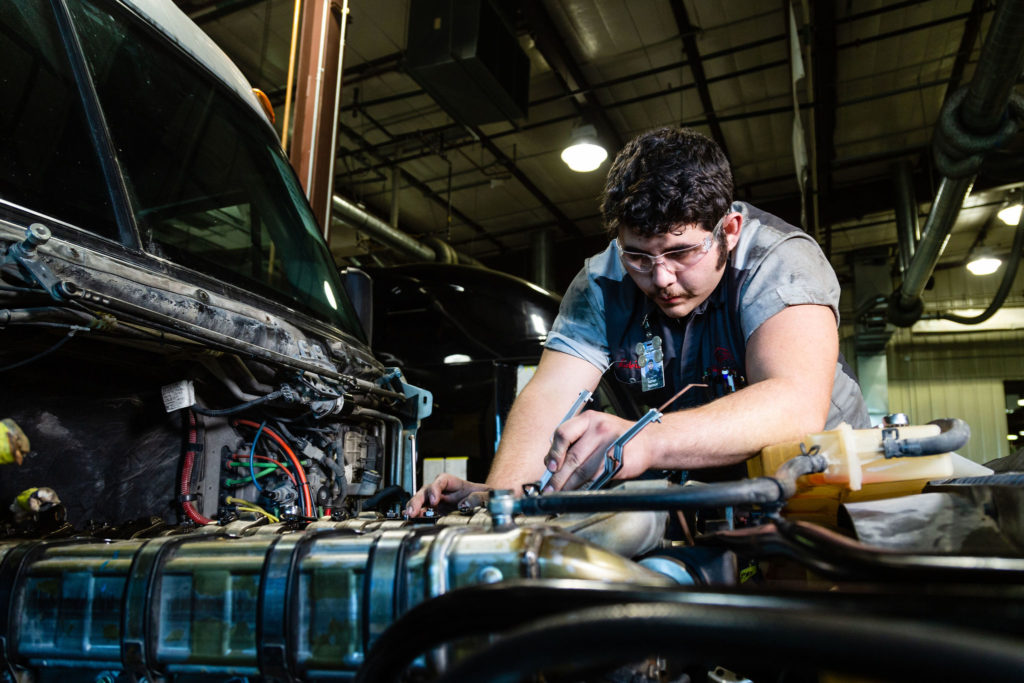
You should be familiar with basic terms used in automotive terminology if you want to understand the various parts of your car. These include the Coil springs as well as Shock absorber, Drive axle, Carbureted engine, and Drive axle. Let's take a closer glance at these terms to learn more about their meanings. This article also discusses some of the most common terms used in automotive terminology. Find out more about the components of your car by reading on. There are a lot of automotive terms that you might not be familiar with.
Coil springs
A coil spring can be described as a piece that is tightly wound from metal and is attached to a suspension system. The manufacturer can make it either hard or soft, and the performance of the coil spring is affected by a variety of parameters. Changes in any of these parameters could affect the vehicle's handling and dynamic performance. The more coils a spring has, the higher its overall performance. This type of spring is one of the most important components of a suspension system and plays a vital role in determining how smooth the ride is.
Shock absorber
Shock absorbers, which are found in cars, dampen the impact of rough surfaces. They also improve the car's handling. Different materials can be used to make shock absorbers, and each one is capable of deforming in different ways. They also have different resistance to temperature changes and environmental pollution. Although the term shock absorber sounds complicated, once you understand its workings, it is very straightforward. There are many kinds of shock absorbers on the market, all designed to handle different types or road conditions.

Drive axle
The drive shaft, or otherwise known as the drive axle, is the primary component of a car's drive train. Although many drivers believe they can repair the drive shaft themselves, a qualified mechanic will be able to diagnose the problem and offer a safe and effective solution. Before taking your car to the shop, you should look into the warranty of your drive train. Pay attention to any strange sounds or fluid leaks that may be coming from the drive axle. Also, be aware of your vehicle's maximum weight. The drive axle can be damaged if the vehicle is too heavy.
Carbureted engine
Carbureted engines, also known as gasoline-powered engines, are those that use a wick or other means to draw air into a combustion chamber. The combustion process begins when fuel vapors enter the chamber. Modern carburetors employ the Bernoulli principle. This is where air flows through small venturis to deliver fuel proportionally to how much air enters the cylinder.
Dash top sensor
Automotive technology is often called "dashtop sensors". These sensors monitor the levels of brake fluid in your car. The brake fluid of a car has a pressure range within which it can function optimally. This sensor monitors that pressure and transmits that information via an electric voltage to the dashboard. If the level or condition of the brake fluid changes, the sensor will disable the switch and alert you through the warning light.
Slip coupling
In the automotive world, the term "limited-slip coupling" can have many different meanings. In an automatic all wheel-drive system, the limited-slip coupling engages the secondary as required. This mechanism gives information to the vehicle's computers, which control its driving characteristics. It also serves to transport coolant between an engine's cooling system & its heater core. Consider the following: engine RPM without accessories on, free running RPM (engine running RPM), ignition timing and engine running temperature.

M85 mixture of 85% and 15% gasoline
M85 fuel is a mixture of 85% methanol with 15% gasoline. It costs the same in California as mid-grade gasoline. Most modern vehicles use this blend and are flex-fuel vehicles, which means they have a sensor that detects methanol content. This sensor allows the vehicle to tell its computer which fuel it is and adjusts the ignition or injectors accordingly.
FAQ
What are the requirements of an auto technician?
You must have high school, or GED, and be able to read and write well in English and math. You also need to be able to read and write well. You will need to pass a written test and then go through a series of practical exams before being allowed to start work.
To be a car mechanic, do you need a degree? Can I study part-time?
While a degree is not required, it does help. Employers will prefer candidates who have completed a degree. It shows that you've worked hard and are determined to succeed.
This doesn't necessarily mean you can't continue to work while studying. Some universities permit students to do coursework during summer holidays and complete their studies later in a year. Others let students take classes part-time throughout the year.
Does it really matter what college I choose?
No, not really. There's no difference between colleges regarding getting into the automotive industry. Some schools have better programs than others, so you might want to look elsewhere if your goal is something more specialized.
Statistics
- 52% of Mechanics in the United States think their salaries are enough for the cost of living in their area. (indeed.com)
- According to the BLS, total auto technician employment is expected to exceed 705,000 by 2030. (uti.edu)
- The U.S. Bureau of Labor Statistics (BLS) reports that the job outlook for automotive service technicians and mechanics is expected to decline by 4% from 2019 to 2029. (indeed.com)
External Links
How To
How to be an Automotive Technician
An automotive technician provides repair services and maintenance to vehicles. He/she is employed at automobile dealerships, garages, service centres, and auto shops. He/she helps customers fix their cars, trucks, motorcycles, ATVs, boats, lawn mowers, snowmobiles, tractors, trailers, farm equipment, planes, helicopters, jet skis, watercraft, bicycles, motorcycles, scooters, golf carts, etc. An automotive technician must know how to diagnose problems and perform repairs efficiently, safely, accurately, quickly, and correctly.
If you want to be an automotive technician, you need an associate degree from vocational school. After completing this program the student must pass the National Institute for Automotive Service Excellence exam (ASE). ASE stands as American Society of Mechanical Engineers. The ASE certification test consists two sections. One section tests knowledge of mechanical components, while the other section tests skills in practical areas. You must attend one of the authorized testing sites to take the test. These testing sites can be found online and through your local dealer.
Before becoming an automotive technician, a candidate must pass the test. The process will vary depending on where an applicant lives. Some states require that candidates attend training courses, while others permit them to learn independently. Some states issue licenses to technicians as soon as they get their license. Others wait until they have worked at least six months as an automotive technician.
To become an automotive technician, one must apply at a local dealership. New employees are usually apprentices when they first get hired. Apprenticeship programs typically last three to four years. A student will learn to repair basic things like changing oil, adjusting brakes or replacing tires. They also learn how spark plugs are cleaned and inspect engine compartments. Some students are taught how to repair engines and replace transmission fluids. Classes are offered by most schools during regular business hours. However, some schools offer evening classes if needed.
When a student has completed his/her apprenticeship, they become a journeyman. Journeymen spend typically four to five years learning to install major systems such as transmissions and differentials, steering gear, suspensions and drive shafts. They learn how to do complex repairs such as remanufacturing engines, rebuilding transmissives, and troubleshooting electronic components. Employers prefer to hire journeymen as they are familiar with the job and can anticipate customer needs.
After passing the exams, candidates may be eligible to open their own shop if they pass all requirements. According to Bureau of Labor Statistics, there were almost 1.7 million available jobs in the automotive mechanic field in 2010. This figure is expected to rise 18 percent between 2009-2020. When a candidate plans to open his/her own shop he/she should be ready to invest thousands of dollars in equipment.
Many factors affect the automotive technician's salary, including location, education, experience, and employer type. A jobless person can expect to make $20,000 per year. A person with only a high-school diploma could make around $21,000 annually. Associate's degrees earn approximately $24,000 per annum. Technicians with bachelor's degrees earn approximately $27,000 per year. Master's degree holders make around $32,000 annually. Salary increases can be common. A professional who earns less that $30,000 today could reasonably expect a $40,000 increase in the next few decades.